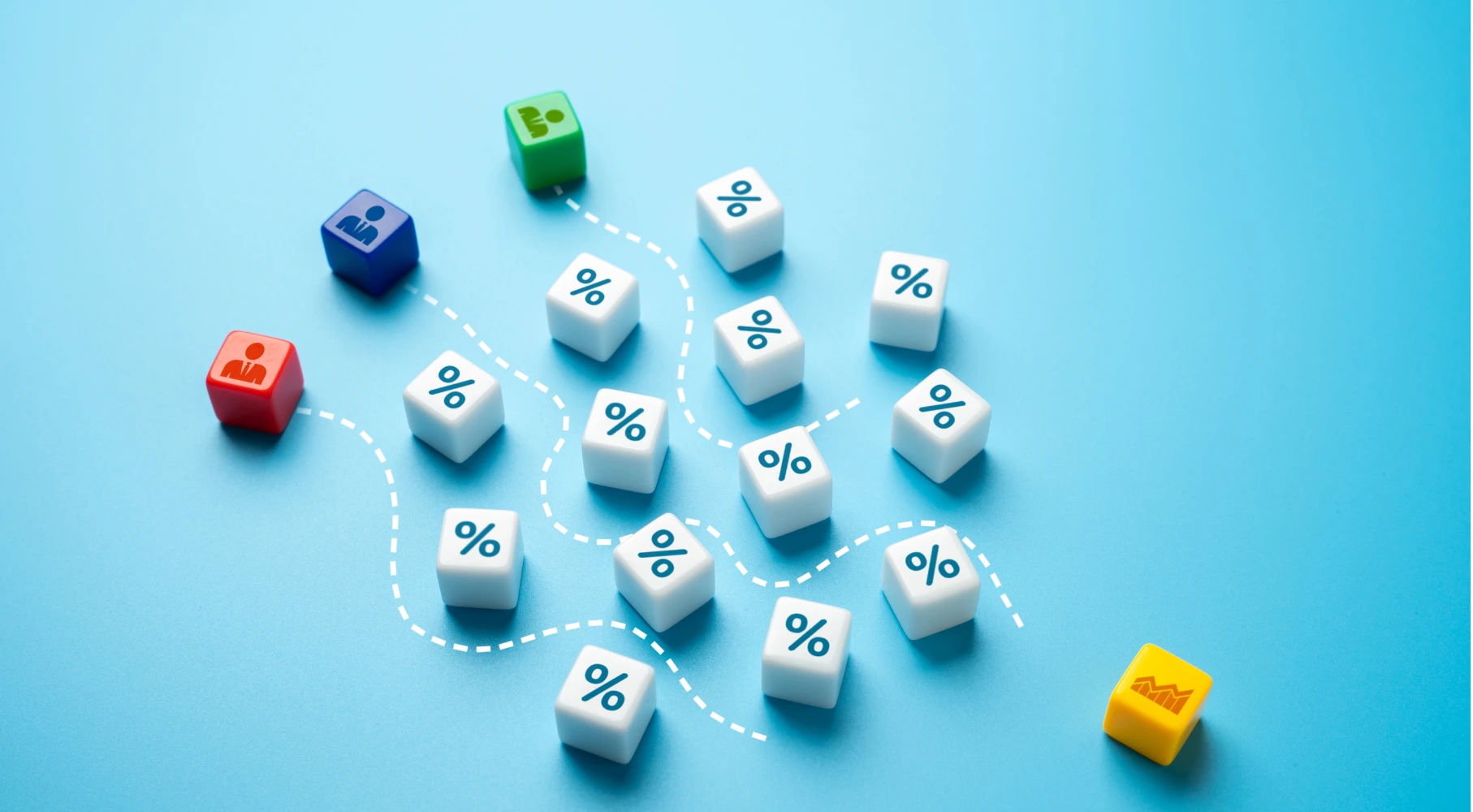When was the last time you took a hard look at your pricing strategy? If you’re not leveraging differential pricing, you may be missing out on serious revenue.
This isn’t about charging random prices—it’s about charging the right price to the right customer at the right time. Whether it’s adapting to market shifts, optimizing for demand, or tailoring prices to customer segments, differential pricing is no longer optional—it’s essential.
In this guide, we’ll break down what differential pricing is, why it matters, and how to use it effectively. You’ll walk away with a sharper, more agile pricing strategy designed to boost revenue without sacrificing customer trust.
What is Differential Pricing?
Differential pricing is a strategy where businesses charge price variations for the same product or service. The market price changes depending on several key factors, such as:
- Customer segments (for example, students vs. professionals)
- Time of purchase (like peak hours vs. off-peak times)
- Geographic location (prices may vary by region)
- Market conditions (such as supply, demand, or competition)
This approach is not based on guesswork. It uses data to make smart pricing decisions. Businesses analyze customer behavior and market trends to find the one price for each situation.
How Does It Use Set Prices and Different Price Points for Profits?
Companies may offer set prices for some groups and discounts for others. For instance, they might give lower prices to first-time buyers or run promotions during slow seasons. This lets them serve both price-sensitive and premium customers.
Differential pricing enables businesses to generate higher profits. It also allows them to reach a wider audience. By setting the right price for the right customer at the right time, companies can increase revenue without losing trust.
Whether it’s through tiered pricing, personalized discounts, or regional premium price adjustments. The goal? To offer flexible pricing that reflects the perceived value of your product based on market demand and customer value.
Types of Differential Pricing
Differential pricing isn’t just about charging different prices for the same product or service—it’s about strategically adjusting the pricing model based on specific variables. Each type has its own application, which can significantly enhance a company’s pricing strategy and boost revenue. Here’s a deeper dive into the different differential pricing strategies you can implement.
Geographic Pricing
Often overlooked, geographic pricing is more than just adjusting for local conditions. It’s about setting price points based on a combination of factors like demand variations, competition in each region, and local purchasing power. Businesses also factor in market conditions that vary by location, allowing for a pricing model that’s highly flexible and personalized.
Time-Based Pricing
Known for its role in dynamic pricing strategies, time-based pricing adjusts depending on when the customer makes a purchase. This method doesn’t only apply to peak or off-peak times; it’s about identifying subtle price points within specific time frames. Businesses can implement a dynamic pricing strategy to predict demand fluctuations based on seasonal patterns or demand differential pricing.
Segmented Pricing
A powerful differential pricing technique, segmented pricing targets different customer groups based on their willingness to pay. This can be extended beyond basic customer demographics and delve into behavioral segmentation. Using data from customer interactions, businesses can tailor prices more effectively for various customer segments, ensuring maximum value capture.
Penetration Pricing
Penetration pricing can be used when a business introduces a new product or service. It helps attract customers by offering a lower initial price. The goal is to build market share. Over time, businesses can shift from price discrimination to a more optimized pricing model that incorporates customer feedback and profit margins. It’s not just about low prices; it’s about adjusting to maximize lifetime value.
Skimming Pricing
When launching a high-end or innovative product, skimming pricing is an excellent approach to initially capture higher margins. By adjusting for early demand, this strategy capitalizes on the customers who are least sensitive to price. Companies use price differentiation techniques within this model to allow for incremental price increases, segmenting the market through various price points for different product or service tiers.
Personalized Pricing
This differential pricing strategy is more than just applying discounts based on customer loyalty. Personalized pricing dynamically adjusts based on individual behaviors, such as purchase history, browsing behavior, and geographic location. Leveraging pricing tactics like this creates a deeper price differentiation and aligns perfectly with a more customized experience for each customer, enhancing customer satisfaction and loyalty.
Volume Pricing
Volume pricing offers businesses the ability to adjust prices based on how much of a product a customer buys. This type of pricing is ideal for businesses that want to reward large-scale purchases or incentivize customers to buy more at once. By assessing purchase history, companies can create dynamic pricing models that offer discounts based on the quantity bought, increasing revenue from bulk transactions.
Psychological Pricing
Sometimes, the smallest price changes can have the largest impact. Psychological pricing taps into the willingness to pay by using pricing tactics that appear more attractive, such as ending prices with “.99.” This pricing technique plays on the customer’s perception of a better deal, even when the actual price difference is minimal. It’s a subtle but powerful tool in the pricing management toolkit.
Discount-Based Pricing
This form of differential pricing is common in retail and B2B sectors. Offering strategic discounts can encourage customers to purchase when their willingness to pay is not fully aligned with the product’s original price. The challenge lies in finding the right price points and timing for these discounts, ensuring businesses still maintain healthy profit margins.
Choosing the right pricing strategy based on customer behavior is key. Set different prices based on price sensitivities and real-time price elasticity. Stay agile, stay smart—let your pricing work for you..
Advantages and Disadvantages of Differential Pricing
Differential pricing is a dynamic and flexible strategy that can offer substantial benefits for businesses. However, like any pricing model, it also comes with its challenges.
| Advantages | Disadvantages |
| Maximized Revenue Potential
Captures the highest revenue from each segment by adjusting prices strategically. |
Customer Perception Issues
Customers may feel unfairly treated if they pay more than others. |
| Better Market Segmentation
Tailors pricing to different customer groups based on willingness to pay. |
Risk of Alienating Loyal Customers
Long-term customers may feel betrayed by discounts offered to new ones. |
| Improved Competitive Edge
Allows dynamic responses to market shifts and competitors’ pricing. |
Implementation Complexity
Requires advanced analytics and real-time data systems. |
| Enhanced Customer Satisfaction
Personalized pricing improves customer experience and loyalty. |
Brand Reputation Risk
Can appear exploitative and damage brand trust if not handled transparently. |
| Efficient Inventory Management
Helps clear slow-moving items and optimize inventory levels. |
Potential for Cannibalization
Cheaper prices in one channel may undercut others. |
| Increased Customer Acquisition
Attracts price-sensitive customers in new or competitive markets. |
Legal and Ethical Risks
May violate laws or raise ethical concerns depending on the region. |
| Greater Profit from Premium Segments
Targets early adopters or high-end buyers willing to pay more. |
Margin Erosion
Discounts can reduce overall profit if not carefully planned. |
| Boost in Market Penetration
Helps gain market share by initially offering lower prices. |
Inconsistent Pricing Strategy
Constantly changing prices can confuse and frustrate customers. |
| Flexibility in Pricing
Enables quick price adjustments to reflect market conditions. |
Negative Impact on Long-Term Loyalty
Perceived unfairness can reduce trust and long-term loyalty. |
| Value Optimization
Matches price with perceived value, maximizing what customers are willing to pay. |
Increased Operational Costs
Requires continuous monitoring and analytics, increasing costs. |
Striking the Right Balance
While differential pricing offers significant advantages, the strategy must be implemented with care. Businesses should monitor and adjust their pricing to ensure they’re capturing maximum value without alienating customers or harming brand perception. With the right data and technology, companies can make informed pricing decisions that enhance profitability and customer satisfaction.
Also Read: Understanding Price Inelasticity – How is It Different From Elasticity of Demand?
How to Use Differential Pricing Based on Market Conditions?
Differential pricing isn’t just about tweaking numbers on a price tag—it’s about being smart, strategic, and a little bit empathetic. It’s like hosting a party where everyone gets their favorite drink at just the right time.
The goal? Keep the premium guests smiling, the budget-conscious guests coming back, and your margins healthy. Done well, it’s not just pricing—it’s personalization at scale. Here’s how to make it work beautifully.
1. Know Your Customer, Personally
Track behaviors like browsing patterns, purchase frequency, and timing. Use this to offer the right deal at the right moment. A customer who keeps eyeing those sneakers? Maybe a small, personalized nudge is all they need.
2. Flex with Demand, Don’t Fight It
Prices should rise when everyone’s buying and dip when the shelves are quiet. Think of it like supply and demand doing a graceful dance—you’re just keeping time with the music.
3. Let Geography Guide You
Not all regions shop the same. Luxury buyers and bargain hunters shouldn’t see the same price tag. Pursue price matching based on the local market realities, from demand to competitor benchmarks.
4. Tier Your Offerings Thoughtfully
Basic, standard, premium—give people choices, not ultimatums. A good tiered pricing model lets customers self-select based on value and need, while you capture more revenue across segments.
5. Be Timely with Your Tags
Use time-based pricing to your advantage. Raise prices during peak hours or seasons and ease them during lulls. It’s like happy hour for your entire catalog.
6. Watch the Competition, Play Your Own Game
Stay sharp on competitor pricing, but don’t be reactive. Instead, respond with value—like bundles or exclusive perks—so you’re not just cheaper, but better.
7. Match Prices to the Product’s Journey
New product? Charge a premium for early adopters. As the buzz fades, lower prices are needed to catch latecomers. Let your pricing evolve just as your product does.
8. Predict, Don’t Just React
Use data to forecast how sensitive different segments are to price changes. This way, you can stay one step ahead, adjusting prices before demand drops or costs spike.
9. Tell the Story Behind the Price
People accept different prices, as long as they understand why. Be clear, be fair, and frame your pricing logic (like loyalty rewards or seasonal deals) in a way that makes sense.
How to Implement Differential Pricing Strategies?
Implementing a differential pricing strategy requires careful planning and real-time adjustments to maximize revenue while maintaining customer satisfaction. Here’s a streamlined approach to putting it into practice:
- Segment Your Customers: Begin by identifying key customer segments based on willingness to pay and behavior. This segmentation allows you to set different prices tailored to the needs of each group, optimizing both value and profit.
- Use Data Analytics: Leverage real-time data to track customer behavior and demand patterns. This helps you adjust prices dynamically based on factors such as seasonality, purchase history, or competitor pricing, ensuring you capture the most value at any given time.
- Set Clear Pricing Rules: Establish clear guidelines for price changes. By defining rules around when and why prices change, you can ensure consistency, prevent confusion, and avoid customer backlash.
- Adopt Real-Time Pricing Tools: Implement dynamic pricing technology to adjust prices based on demand fluctuations and competitive shifts. Automated systems can help you stay agile and responsive, adjusting prices in real time without manual intervention.
- Test and Optimize: Start by testing pricing adjustments in select markets or customer segments. Use A/B testing to understand how different price points affect behavior, and iterate on the strategy based on performance data.
- Monitor Customer Response: After implementing differential pricing, continuously monitor customer feedback and sales data. Adjust your pricing model based on how customers react to changes, ensuring you don’t alienate loyal buyers.
- Communicate Transparently: Make sure customers understand why prices differ, whether it’s due to time, region, or loyalty. Transparency will reduce negative perceptions and build trust.
- Align with Business Goals: Ensure your pricing model supports broader business objectives. Whether your goal is market penetration, revenue maximization, or customer acquisition, the pricing strategy should be aligned with those targets.
Price Differentiation and Its Impact on Business Strategy
Price differentiation impacts business strategy by allowing companies to adjust prices based on customer segments and market conditions.
- Boosts Profit Margins: Businesses can charge higher prices to premium customers while offering lower prices to price-sensitive ones. This maximizes revenue.
- Gives a Competitive Edge: By adjusting prices based on demand and local competitors, businesses stay ahead and capture more value.
- Helps Acquire and Retain Customers: Offering discounts to new customers or loyalty rewards to existing ones helps build a strong customer base.
- Supports Market Penetration: Price differentiation helps companies enter new markets with affordable prices. As market share grows, prices can rise without losing customers.
- Optimizes Sales Channels: Different pricing for online, in-store, and third-party platforms ensures businesses make the most of each channel.
Incorporating differential pricing allows businesses to optimize profits, adapt to market changes, and improve customer loyalty.
Example Of Differential Pricing
Differential pricing is used in various industries to meet unique needs and maximize revenue. Here are fresh examples of how businesses implement this strategy:
- Sports & Entertainment: Event organizers or sports teams often use dynamic pricing for ticket sales. For instance, ticket prices for major events or playoff games are higher, while tickets for regular-season games or less popular events are discounted to attract more attendees.
- Taxi & Ride-Sharing: Ride-sharing companies like Uber use time-based pricing with surge pricing during peak hours or in high-demand areas. Prices increase when demand is greater than supply, such as during bad weather or busy events, and drop during off-peak times.
- Automotive Industry: Car manufacturers often implement differential pricing based on the vehicle model, location, and even color. Luxury features or special editions are priced higher, while standard models are more affordable. Geographic factors also play a role in how vehicles are priced.
- Healthcare: Many healthcare providers use price differentiation based on the type of insurance coverage, urgency, or service level. Emergency care often comes at a higher price than scheduled, non-urgent visits, reflecting the immediacy of the service provided.
Final Thoughts
Differential pricing is a powerful tool for businesses to boost revenue, improve customer satisfaction, and stay competitive. By adjusting prices based on customer segments and market conditions, companies can maximize profit and cater to diverse customer needs. However, this strategy requires careful management to avoid customer frustration and brand issues.
For businesses seeking to optimize differential pricing, Impact Analytics PriceSmart™ offers a comprehensive solution. It helps companies manage pricing across segments and channels, ensuring agility and profitability in a dynamic market.
Frequently Asked Questions
What is differential pricing?
Differential pricing is a strategy where businesses charge different prices for the same product based on customer segments, time, location, or demand.
How does price discrimination work in differential pricing?
It works by offering varied prices to different customer groups based on their willingness to pay, helping maximize profit without changing the product.
What are common differential pricing strategies?
Common strategies include segmented pricing, geographic pricing, time-based pricing, personalized pricing, and dynamic pricing.
Why is differential pricing important for profit?
It helps businesses capture more value from each customer segment by aligning price points with price sensitivity and demand conditions.





